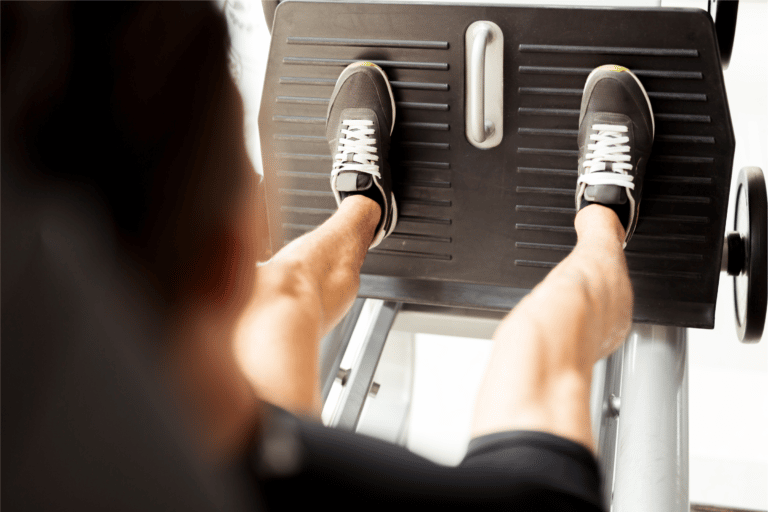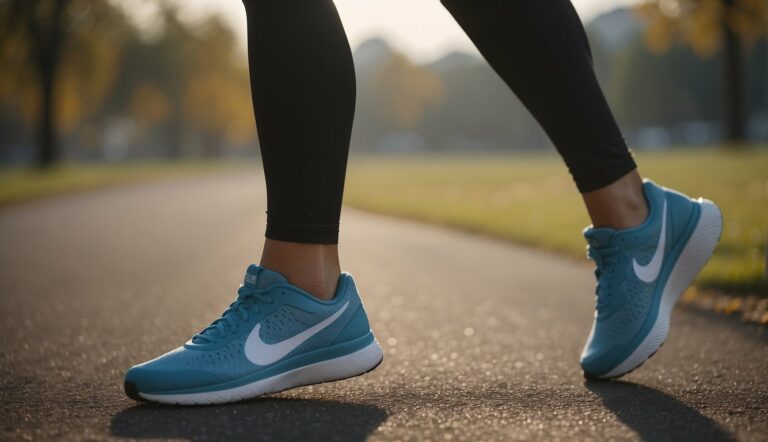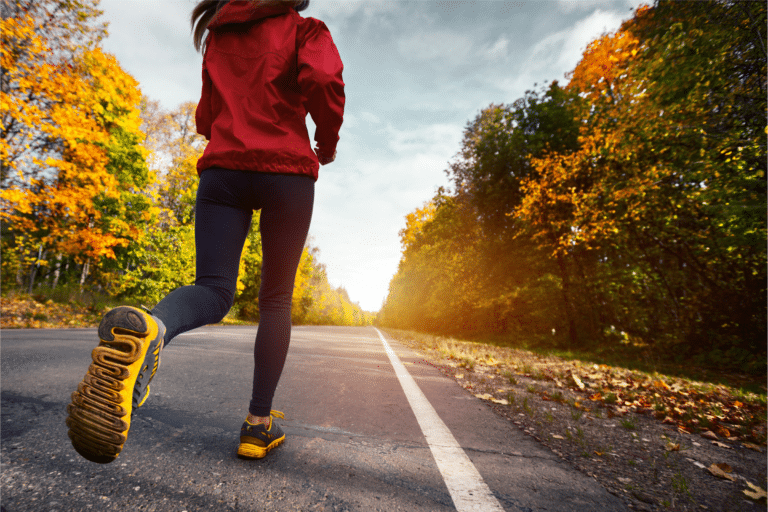Importance of Proper Footwear in Post-Run Recovery: Key to Reducing Stress and Injury
Proper footwear is a crucial element in post-run recovery. From my experience as a UESCA certified running coach, the shoes you slip into after a run can significantly influence how well your body recovers. Recovery footwear, such as shoes or sandals with ample cushioning and arch support, can help to alleviate stress on the feet and lower legs, aiding in muscle recovery and reducing the chance of injury.
Post-run recovery isn’t merely a period of rest, but an active process where proper practices can greatly enhance overall performance. I always advise runners to consider footwear with an ergonomic design that promotes not just comfort, but also facilitates the body’s natural healing process. Footwear that is endorsed by organizations such as the American Podiatric Medical Association can provide peace of mind, ensuring that you’re making a choice beneficial for your long-term running health.
Understanding the importance of post-run recovery footwear is a knowledge set that has served me well in my coaching. Shoes designed specifically for recovery play a fundamental role in a runner’s regimen, often incorporating specialized materials that help in reducing soreness and improving circulation. Embracing this aspect of training is key; after all, the steps taken after a run are just as important as the miles covered during the workout itself.
The Importance of Post-Run Recovery
Post-run recovery is crucial for reducing muscle soreness, promoting muscle repair and growth, and minimizing recovery time. My experience emphasizes that appropriate rest, nutrition, and specialized recovery techniques are key components of an effective post-run recovery plan.
The Role of Rest and Sleep
Rest plays a critical role in post-run recovery. It allows the body to repair and strengthen itself. Sleep is particularly important, as it’s during deep sleep that the body undergoes most of its tissue repair.
As a UESCA certified running coach, I advise runners to ensure they get quality sleep by establishing a consistent bedtime routine to help reduce inflammation and support muscle recovery.
- Key Components for Rest and Sleep:
- Establish a consistent sleep schedule
- 7-9 hours of sleep for optimal recovery
- A dark, cool, and quiet environment enhances sleep quality
Active Recovery Techniques
Active recovery is about engaging in low-intensity exercise to maintain mobility and promote blood flow to the muscles, aiding in nutrient delivery and waste removal.
Techniques I often recommend include light jogging, swimming, or cycling. These activities should be low impact to prevent further muscle strain and should help reduce inflammation and muscle soreness.
- Examples of Active Recovery:
- Light jogging or swimming: 20-30 minutes at easy pace
- Cycling: Low resistance for 20-30 minutes
- Gentle stretching or yoga
Nutrition for Muscle Repair and Rehydration
Proper nutrition and hydration are paramount for efficient muscle repair.
I guide my runners to focus on consuming a balanced mix of proteins for muscle repair, carbohydrates to replenish glycogen stores, and electrolytes to restore what’s lost through sweat. Hydration is not just about water; it’s essential to include electrolytes like sodium and potassium to maintain fluid balance and prevent muscle cramps.
- Post-Run Nutrition Checklist:
- Carbohydrates: Rice, pasta, fruits for quick glycogen replenishment
- Protein: Lean meats, dairy, or plant-based proteins to aid muscle repair
- Electrolytes: Drinks with sodium and potassium or an electrolyte-rich snack
- Fiber: Whole grains and vegetables to support digestion
- Fluids: Water and electrolyte drinks to rehydrate effectively
Through careful attention to these post-run recovery principles, you can fuel muscle repair, curb inflammation, and reduce overall recovery time, setting the stage for your next run.
The Science of Footwear in Recovery

Choosing the right footwear is crucial for post-run recovery, as it can significantly influence comfort, blood circulation, and the reduction of foot fatigue. Recovery shoes are specifically designed to provide the necessary support and cushioning to help runners’ feet recover more effectively after a long run or race.
Support and Cushioning Benefits
Proper arch support and cushioning are essential for recovery sandals and shoes. These features reduce the stress on the feet and legs by distributing weight evenly. Cushioning is important because it absorbs the impact from walking, which helps in minimizing stress on joints and muscles.
- Arch Support: Essential for maintaining foot stability and alignment.
- Cushioning: Absorbs impact, minimizing muscle fatigue.
Footwear Features for Enhanced Recovery
Certain footwear features can enhance the recovery process for runners. A slight rock in the sole, as seen in some Hoka recovery flip-flops, facilitates a natural walking motion, reducing energy expenditure. Quick-drying materials are beneficial for comfort and hygiene, while durability ensures long-lasting use.
- Rocker Sole: Encourages natural gait, promoting blood circulation.
- Quick-drying: Keeps feet dry and comfortable.
- Durability: Ensures the footwear withstands frequent use.
Choosing the Right Recovery Footwear
When at the shoe store, runners seeking recovery shoes should prioritize comfort, ease of use, and the right type of support suited to their pronation pattern. Flip-flops may be convenient for the beach, while cushioned sliders might be preferred for more stability.
- Comfort: Non-negotiable for effective recovery.
- Pronation Support: Match the footwear to your specific needs, whether overpronation or underpronation.
- Ease of Use: Recovery footwear should be easy to put on and take off.
In my experience as a UESCA certified running coach, runners who invest in quality recovery footwear tend to experience less foot fatigue and a more efficient recovery process, enabling them to return to running sooner.
Practical Recovery Techniques
Post-run recovery is as vital as the run itself. Let’s focus on methods that enhance recovery and ensure your muscles are primed for your next run.
Stretching and Mobility Routines
Stretching routinely after a run can aid in alleviating muscle tightness and improving flexibility. Focusing on major muscle groups like hamstrings, quadriceps, hip flexors, and the lower back can help maintain range of motion. A sequence might look something like this:
- Hamstrings: Forward fold for 30 seconds.
- Quadriceps: Standing quad stretch for 30 seconds per leg.
- Hip flexors: Kneeling hip flexor stretch for 30 seconds per side.
- Lower back: Gentle seated twist for 30 seconds per side.
Always ensure muscles are warm before stretching to prevent injury.
Massage and Foam Rolling
Massage and foam rolling can assist in breaking up knots in muscle fibers and tendons, which may develop from repetitive motion. By applying pressure to specific points on your body, you can target areas of muscle soreness and inflammation. For runners, key areas to focus on include:
- Quadriceps
- Hamstrings
- Calves
Spending a few minutes per muscle group can promote blood flow and aid in recovery.
Cold and Heat Therapy
Using cold therapy, such as icing after a run, can reduce inflammation and muscle soreness. Heat therapy, on the other hand, can help relax and loosen tissues. Here’s a quick guide:
- Cold Therapy: Apply ice or a cold pack to sore areas for 15-20 minutes post-run.
- Heat Therapy: Use a heat pack on tight muscles for 15-20 minutes during the warm-up or on non-running days to enhance pliability.
Remember, never apply heat to acute injuries or inflammation, and always protect your skin from direct contact with ice packs.
Injury Prevention and Long-Term Care
As a running coach, my pivotal focus is safeguarding my athletes’ joints, tendons, and overall lower limb health. Choosing the right footwear is essential for injury prevention and enhancing recovery post-marathon or regular running sessions.
Proper Footwear to Prevent Overuse Injuries
The footwear that runners select must align with their individual needs to prevent overuse injuries. Poorly chosen shoes can lead to aches and more serious conditions, as they contribute to unhealthy stress on feet, tendons, and joints.
When seeking to prevent injuries, the goal is to provide stable support that accommodates natural foot movement without restricting the blood vessels, ensuring adequate supply of nutrients and minerals to the affected areas.
Essential Features of Running Shoes:
- Cushioning: To absorb impact and reduce stress on the joints.
- Arch support: To maintain proper alignment and reduce the strain on tendons.
- Fit: Shoes should have enough room to prevent compression of blood vessels.
How Footwear Influences Injury Prevention:
| Footwear Feature | Injury Prevention Mechanism |
|---|---|
| Cushioned Heel | Reduces impact stress on the heel and lower leg tendons. |
| Arch Support | Promotes natural foot posture, decreasing overuse of tendons. |
| Adequate Toe Room | Ensures proper blood flow and minimizes injury risks. |
Consulting Healthcare Professionals
When it comes to recovery and long-term care, I always advise my runners to consult with healthcare professionals, especially when they experience persistent aches or signs of overuse injuries.
Healthcare professionals use precise diagnostic tools and have comprehensive knowledge about managing and preventing injuries specific to athletes. They can guide runners in choosing proper footwear or orthotics tailored to their unique foot anatomy and running style, contributing to more efficient recovery and injury prevention.
Steps to Take When Consulting Healthcare Professionals:
- Describe your pain or discomfort: Be specific about where and when you feel it.
- Discuss your running habits: Include frequency, intensity, and surface.
- Review your current footwear: They can assess wear patterns and offer advice.
By attending to these elements, runners can maintain their health and continue enjoying the multitude of benefits that running offers.
Integrating Recovery Into Your Routine
Integrating appropriate recovery strategies is as crucial as the training itself for runners. Recovery aids in muscle repair and prepares the body for the next workout session.
Designing a Balanced Training Plan
My experience has shown that a well-structured training plan is fundamental for optimal recovery. This plan should alternate between hard training days and easier, low-impact activities to prevent overuse injuries. Here’s a quick view of how I recommend integrating different types of workouts into a week:
| Day | Activity | Intensity | Purpose |
|---|---|---|---|
| Mon | Rest or Yoga | Low | Active Recovery |
| Tue | Interval Training | High | Speed & Endurance |
| Wed | Swimming or Cycling | Low to Moderate | Cross-Training |
| Thu | Tempo Run | Moderate to High | Building Pace |
| Fri | Rest or Light Yoga | Low | Flexibility & Recovery |
| Sat | Long Duration Run | Moderate | Endurance |
| Sun | Rest | None | Passive Recovery |
Remember that incorporating rest days and low-intensity workouts aids in muscle recovery and reduces the risk of injury.
Post-Run Routine and Lifestyle Choices
After each run, a post-run routine is essential. Begin with a cool-down phase, including light jogging or walking followed by stretching to improve flexibility and reduce muscle tension.
I advise my athletes to focus on nutrition post-run, including foods rich in proteins and complex carbohydrates like yogurt, quinoa, and brown rice to replenish energy stores.
Quick tip: include bananas in your post-run meal for their potassium content, which can help with muscle repair.
Next, look at your lifestyle choices that extend beyond the track. Ensure you are wearing supportive and cushioned footwear even when not running, as recovery isn’t limited to exercise alone—it’s a continuous process. Implementing these strategies into your daily routine will enhance your running recovery and overall athletic performance.






